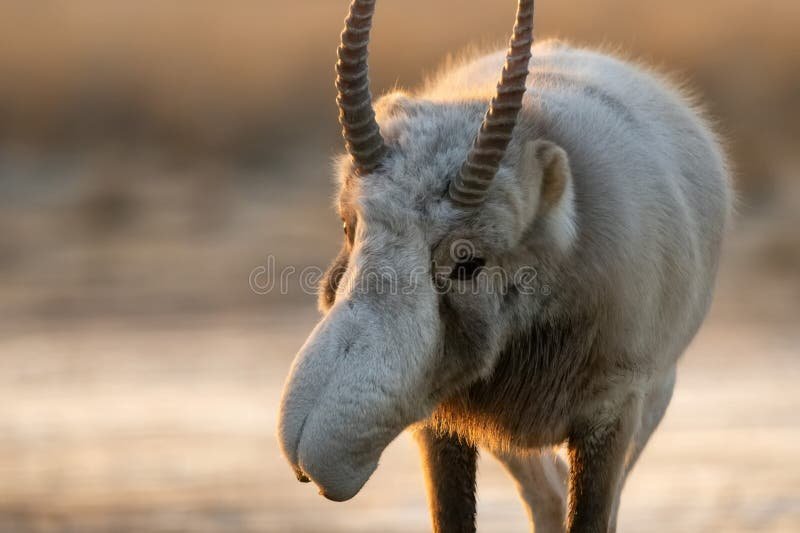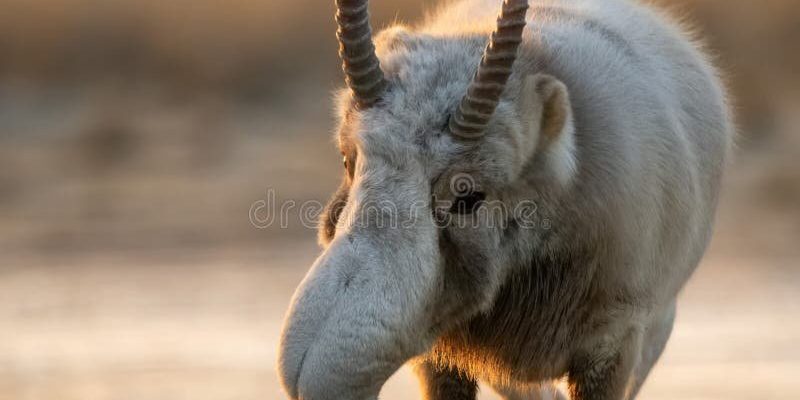
You might picture the saiga scampering across the vast steppes of Central Asia, but it’s more than just a physical presence. Its story intertwines with the lives of the people who share its habitat, finding its way into art, legends, and cultural identities. This connection enriches the saiga’s existence far beyond its status as an endangered species. Let’s explore just how this fascinating animal has inspired tales and traditions across different cultures.
The Saiga in Central Asian Folklore
In the heart of Central Asia, the saiga antelope isn’t just an animal; it’s a symbol. Various tribes have woven the saiga deeply into their folklore. For nomadic cultures, these antelopes represent survival. The vast steppes are their home, and the saiga’s resilience mirrors the adaptability of the people who have roamed these lands for centuries.
You might be interested to know that myths often portray the saiga as a wise guide or protector of the steppe. For example, many stories describe how the saiga would lead lost travelers back home. This connection highlights the deep respect local communities hold for the antelope, seeing it as not just a species but a guardian of their culture. It serves as a reminder of the interconnectedness between humans and nature, illustrating how folklore fosters respect and appreciation for wildlife.
Additionally, many traditional narratives celebrate the saiga’s incredible journey and struggle for survival against harsh climates and predators. This *heroic* imagery resonates with the people, reinforcing their own trials and triumphs in navigating life in the steppes. It’s a beautiful exchange of stories that nurtures a mutual bond.
Art and Symbolism
The saiga antelope has inspired countless artworks that reflect its beauty and significance. From paintings to sculptures, artists often depict the antelope in ways that symbolize resilience and endurance. You might spot saiga motifs in traditional textiles, embodying cultural pride and connection to the land.
One common artistic expression is the use of the saiga’s likeness in jewelry and decorative items. These pieces often carry a dual meaning: they celebrate the saiga while reminding the wearer of the importance of wildlife conservation. As folks wear these symbols, they’re not just showcasing art; they’re sharing a story about protecting their heritage and the environment.
Moreover, the saiga’s unique features—like its distinctive nose—have made it a popular subject in modern art. Artists play with its form, creating abstract representations that challenge viewers to rethink their perceptions of nature and wildlife. This artistic representation can also spark conversations about conservation and the need to protect these magnificent creatures.
Saiga in Literature and Legends
Literature has a long history of featuring animals, and the saiga antelope is no exception. Folk tales often cast the saiga as a central character, embodying traits like agility, cunning, and strength. These stories impart valuable lessons, much like fables do, teaching morals about courage and survival.
In some legends, the saiga is described as a magical creature that brings good fortune. It’s believed that spotting a saiga while traveling can bless the journey or ensure a bountiful harvest. This connection between the animal and prosperity illustrates how deeply intertwined the saiga is with the daily lives and hopes of local communities.
Moreover, modern authors continue to draw inspiration from the saiga. Its endangered status raises awareness about environmental issues and the need for conservation efforts. By weaving the saiga into contemporary narratives, writers help bridge cultural history with modern-day challenges, encouraging readers to think about their roles in protecting biodiversity.
Modern Conservation Efforts and Cultural Representation
As the saiga antelope faces threats from poaching and habitat loss, modern conservation efforts are gaining traction. The cultural significance of the saiga represents a vital asset in these efforts. Communities are increasingly recognizing that protecting the saiga goes beyond saving an animal; it’s about safeguarding their cultural heritage.
Many conservation programs are involving local communities, promoting sustainable practices that benefit both people and wildlife. For instance, educational campaigns illustrate how protecting the saiga can sustain the traditional lifestyles of local herders and maintain the balance of the ecosystem. This collaboration fosters a sense of ownership and encourages a collective responsibility to preserve the saiga’s habitat.
Interestingly, the *saiga’s story* is now being shared on global platforms, raising awareness about its plight and drawing attention to broader conservation themes. Engaging storytelling—whether through documentaries or social media—helps amplify the voices of those advocating for the saiga, making them a part of the international conservation dialogue.
Influence on Local Identity
The saiga antelope isn’t just an animal; it’s a part of what makes local cultures unique. For many communities, the saiga symbolizes resilience and strength, much like the people who have thrived in tough environments. This connection shapes local identities and creates a sense of belonging.
In many regions, the saiga has become a source of pride. Events like local festivals may celebrate the saiga, featuring traditional music, dance, and storytelling. These gatherings not only honor the animal but also reinforce community bonds, creating a shared narrative that spans generations.
Furthermore, the presence of the saiga in daily life—whether in names of places, expressions, or teachings—keeps the connection alive. As people share tales of the saiga, they pass on values of respect, conservation, and community, ensuring that future generations maintain a cultural relationship with this remarkable creature.
The saiga antelope is so much more than just wildlife; it’s a cultural icon that bridges past and present in Central Asia. Through folklore, art, literature, and community traditions, the saiga embodies a connection to nature that enriches human experience. These narratives reflect shared values of resilience, community, and the importance of conservation.
As the world shifts, the story of the saiga reminds us of our responsibility to protect not only the creatures that wander our landscapes but also the cultural identities intertwined with them. By understanding and celebrating the legacy of the saiga, we foster respect for our shared environment and a commitment to safeguarding it for future generations. So the next time you hear about this intriguing antelope, remember—it’s not just about an endangered species; it’s about a world of stories waiting to be told.

